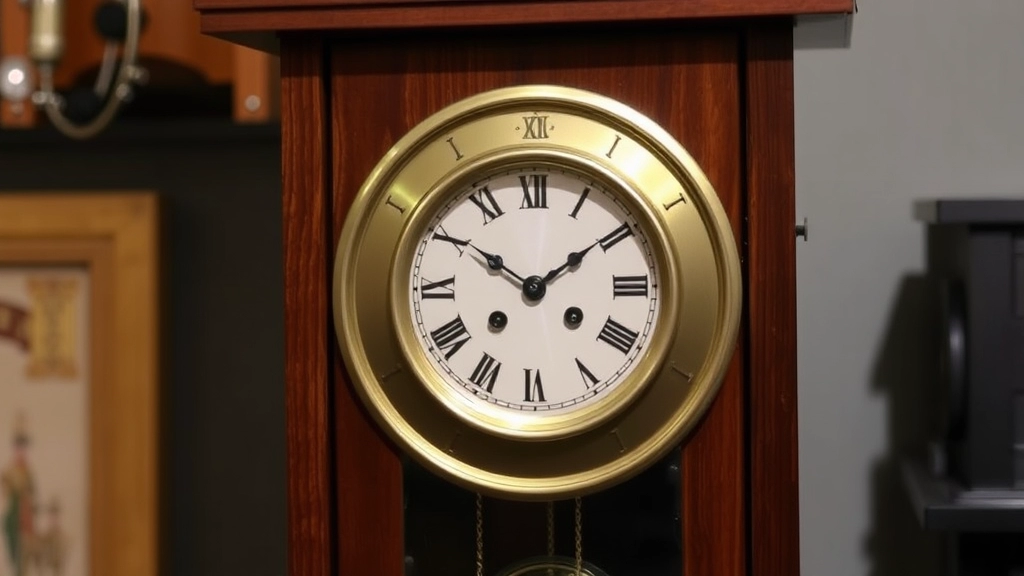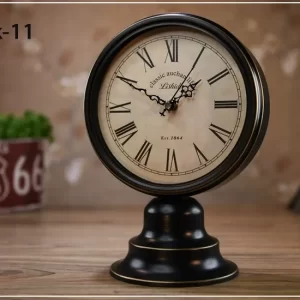How to adjust a pendulum clock
Is your pendulum clock broken?
Has your pendulum clock stopped swinging? Or maybe the clock hands aren’t moving at all? At Mantle Clock Studio, we know how frustrating it can be when antique pendulum clocks show signs of wear and tear or malfunction. Whether you’re looking for professional help or a do-it-yourself attempt, we’ve got you covered.
In this guide, we’ll show you how to properly diagnose problems with your pendulum clock and adjust its speed step-by-step.
How does a pendulum clock work?
A pendulum clock is a masterpiece of mechanical engineering designed to accurately tell time. It relies on the coordination of several key components:
- The clock face: the face of the clock where the hour and minute hands show the time.
- Pendulum: A swinging pendulum attached to a rod that regulates the timekeeping.
- Gearing: The device that controls the power transmitted to the pendulum.
- Chronograph Gear: Responsible for synchronizing the movement of the clock hands.
- Escapement: provides the power to keep the pendulum swinging.
- Pendulum or Mainspring: Provides energy to the pendulum and gears.
The pendulum operates by converting energy back and forth between potential energy (highest point) and kinetic energy (lowest point). This repetitive motion is called the resonator, and it drives the clock’s timekeeping process with constant precision.
Each swingof the pendulum triggers the escapement, which locks and unlocks the gears at controlled intervals, allowing the pendulum to gradually “escape”. This produces the familiar ticking sound of a pendulum clock.
How to adjust the speed of a pendulum clock
The speed of a pendulum clock depends on the length of the pendulum. You can adjust the speed of the pendulum clock by turning the nut on the bottom of the pendulum.
-
Elegant Black Mantel Clock for Living Room – Silent & Stylish
Original price was: $180.00.$170.00Current price is: $170.00.
- To speed up the clock: turn the nut to the right (clockwise) to shorten the length of the pendulum.
- To slow down the clock: turn the nut to the left (counterclockwise) to lengthen the pendulum.
The following is a step-by-step guide to adjusting the speed:
- Check the time: compare the time on the pendulum clock with an accurate reference time (such as a cell phone or digital clock).
- Set the hands: align the hands of the pendulum clock with the reference time.
- Wait 24 hours: after one day, check whether the clock is faster or slower compared to the reference time.
- Adjust the nut: Turn the nut clockwise to speed up the pendulum and counterclockwise to slow it down. The pendulum speed changes by approximately one minute per revolution.
- FINE TUNING: Repeat the above steps for fine tuning (e.g., half a turn) until the clock runs accurately.
Troubleshooting Common Pendulum Clock Problems
If adjusting the pendulum does not solve the problem, here are some common problems you may encounter and how to solve them:
1. Pendulum hitting the case
Make sure the pendulum swings freely and does not touch the clock case. If the pendulum is not level, use a small piece of cardboard to hold it in place.
2. Chain or Pendulum Tangled
Check for tangled pendulum or chain. If the chain has slipped off the sprocket, it may need to be replaced.
3. Stuck hour hand
If the hands are stuck, move them gently and check for obstructions such as contact with the dial or each other. If necessary, bend the hands slightly to prevent interference.
4. Dried oil stains and debris
Dust or dried oil stains can prevent the pendulum from swinging. Clean the inside of the clock with a soft-bristled brush and apply a small amount of clock oil to lubricate the moving parts.
5. Dirty or worn movement
If a clock’s mechanism is dirty or worn, it may require professional cleaning or repair to restore its function.
How accurate are pendulum clocks?
Pendulum clocks are known for their historical significance and accuracy. While not as advanced as modern clocks, their mechanical craftsmanship makes them very accurate.
The accuracy of a pendulum clock depends largely on the stability of the pendulum’s swing , and the Shortt-Synchronome clock is one of the most famous examples, achieving an impressive accuracy of one second per year at a stable temperature.
Final Tip
Taking care of a pendulum clock not only preserves its functionality, but also highlights its heritage as a timeless mechanical marvel. Whether you’re adjusting the speed of the pendulum or troubleshooting a common problem, following these steps will ensure your clock runs smoothly for years to come.
If your pendulum clock is in need of professional repair, feel free to contact the MantelClock workshop. We are here to serve you and help you treasure your antique timepiece.





